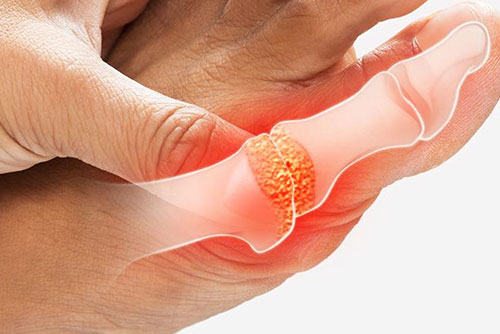What is Gout: Symptoms, Prevention, Treatment - Dr. Yeung 楊浩康
Gout is an arthritis caused by an excess of uric acid in the body. This condition often results in acute and severe joint pain, swelling, and redness with heat. The most common site for gout attacks is the big toe, but it can also affect other joints such as the knees, ankles, and fingers. When uric acid crystals form within the joints, they trigger a localized inflammatory reaction, leading to intense pain and discomfort in the affected areas.

Symptoms of Gout
Gout typically presents with sudden, severe joint pain, often striking at night and disrupting sleep. Affected joints swell rapidly, accompanied by redness, warmth, and sometimes mild fever or general discomfort. These acute attacks cause significant pain and, in severe cases, impair work and quality of life. During an attack, joint mobility is markedly restricted, making prompt treatment essential.
Causes of Gout
Gout arises from multiple factors, with key causes including:
- Elevated uric acid levels: Excess production or poor excretion leads to uric acid crystal deposits in joints.
- High-purine diet: Red meat, organ meats, shellfish, and sugary drinks increase uric acid production.
- Genetic factors: A family history of gout significantly raises risk.
- Dehydration and stress: Heavy drinking, dehydration, or intense exercise can spike uric acid levels.
- Obesity and metabolic disorders: These disrupt normal uric acid metabolism, triggering gout.
Gout Management and Care Strategies
Preventing and treating gout relies on lifestyle changes and medication. Dietary adjustment is critical in daily care. Patients should minimize or avoid high-purine foods while increasing intake of vegetables, fruits, whole grains, and low-fat dairy to control uric acid levels. Adequate hydration—promoting kidney excretion of uric acid—is vital, with extra intake recommended in hot weather to prevent crystal formation.
Regular exercise improves circulation, metabolism, weight, and overall health, reducing gout attack frequency. Low-intensity aerobic activities like walking, swimming, or light cycling are ideal, while intense exercise should be avoided to prevent joint strain. For long-term management, doctors may prescribe medication and monitor blood uric acid levels for adjustments.
Differences Between Gout and Pseudogout
Beyond true gout, pseudogout is another common joint condition, caused by calcium pyrophosphate crystal deposits. Its symptoms—joint pain, swelling, redness, and warmth—mimic gout but differ in location and pattern. Pseudogout often affects knees and larger joints, while gout typically targets the big toe. Imaging and joint fluid analysis distinguish them, as pseudogout crystals differ from gout’s uric acid crystals. This differentiation is crucial for treatment, as medication approaches vary.
Some patients struggle to distinguish gout from pseudogout during initial attacks. Diagnosis should rely on comprehensive clinical data and tests, followed by personalized treatment. Pseudogout treatment focuses on inflammation and pain relief, sometimes addressing electrolyte balance, rather than solely lowering uric acid.
Conclusion
In summary, gout is a common, painful arthritis driven by excess uric acid, often manifesting as sudden nighttime joint pain, redness, and warmth. Through improved diet, hydration, regular exercise, weight control, and medication, uric acid levels can be managed to prevent and reduce attacks. Understanding the distinction between gout and pseudogout is key to selecting appropriate treatment. Patients should seek regular medical checkups and adjust lifestyles per doctor’s advice to prevent long-term joint damage and complications. Effective gout management enhances quality of life, ensuring daily activities remain unaffected and laying a foundation for future health.
